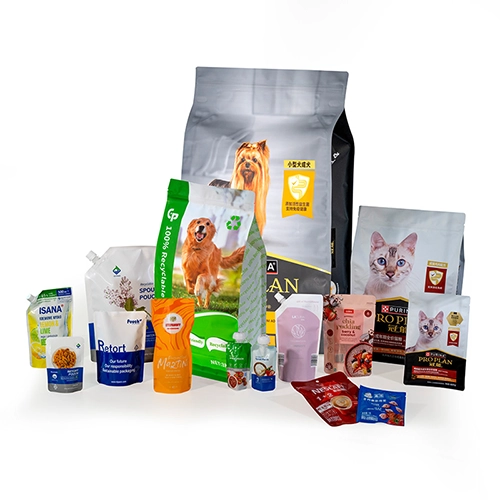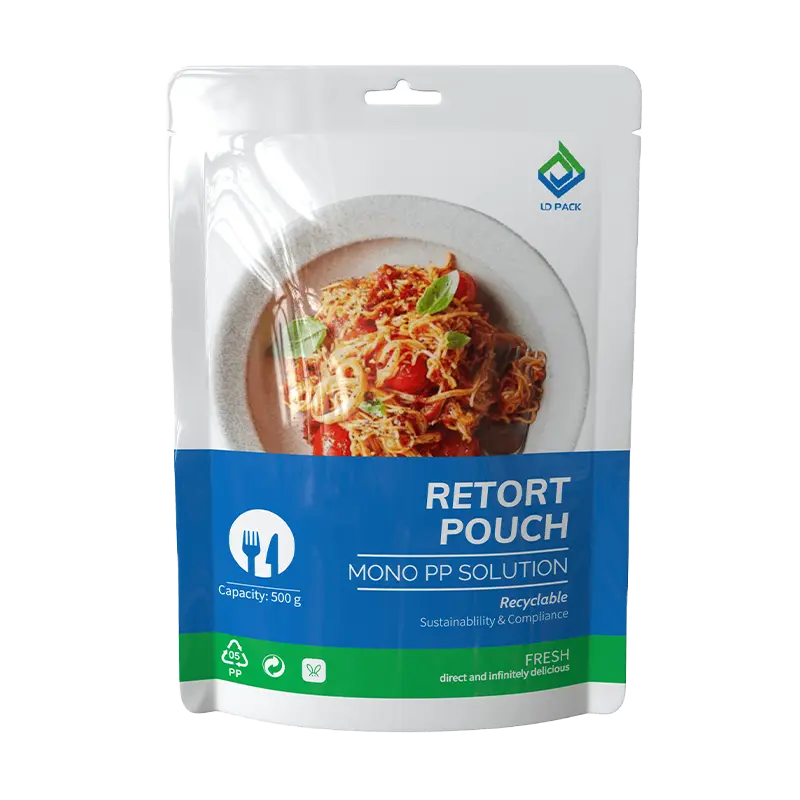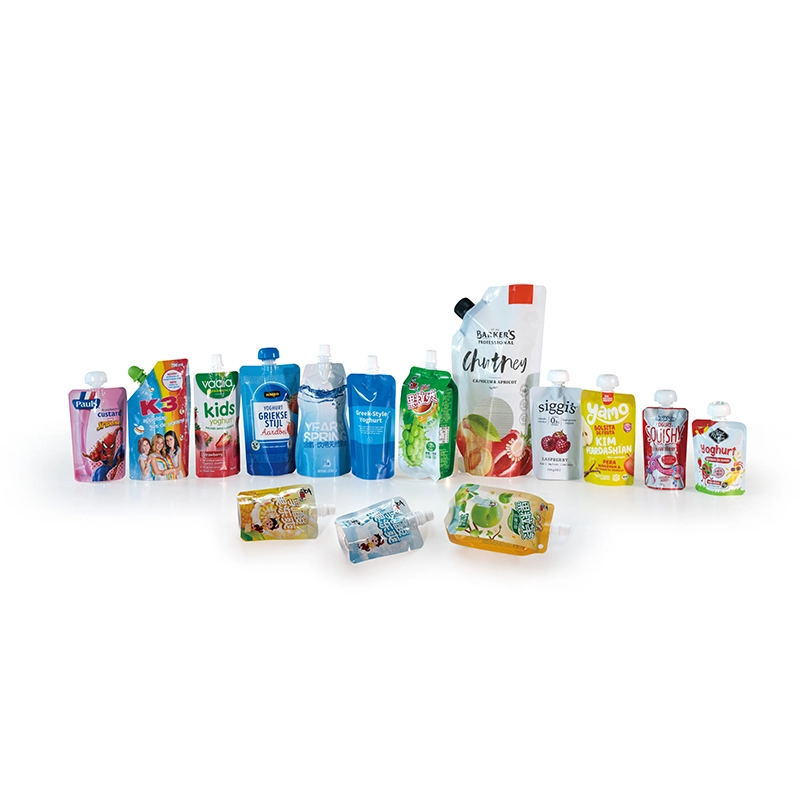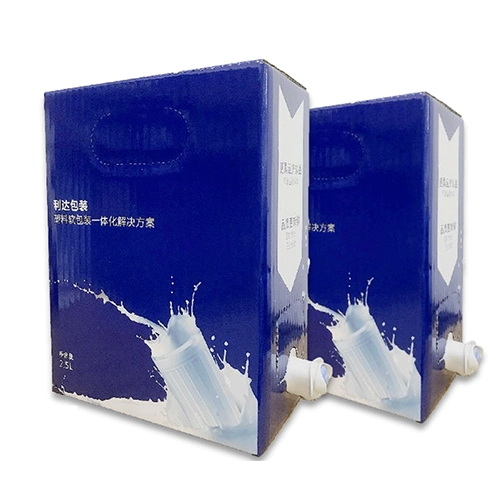The Application of Three-Side Seal Pouches in the Condiment Industry
1. Current Status and Packaging Demand Drivers in the Condiment Industry
1.1 Industry Segmentation and Market Size
The condiment industry—covering soy sauce, vinegar, sauces, and spices—is projected to reach RMB 788.1 billion by 2025, growing at 8% annually. Market leaders like Haday and Laoganma drive strong demand for packaging solutions.
1.2 Core Pain Points in Packaging Demand
Functional Requirements: Condiments are prone to moisture absorption and oxidation, requiring high-barrier packaging. For example, soy sauce packaging must block oxygen and light, while spices need moisture-proof and anti-caking features.
Convenience Upgrades: Consumers prefer easy-to-open and resealable small packages. Three-side seal pouches can incorporate zipper designs to allow repeated use and reduce waste.
Brand Differentiation: With the trend toward premiumization, packaging must be both visually appealing and highly recognizable. For example, metallized three-side seal pouches offer a glossy, upscale appearance, and gravure printing enhances print quality and detail.
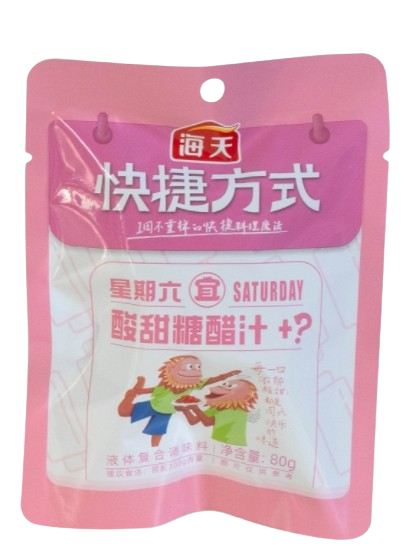
2. Structural Advantages of Three-Side Seal Pouches
2.1 Process Characteristics of Three-Side Seal Pouches
Three-side seal pouches (sealed on both sides and the bottom, with an open or zipper-top design) offer several advantages over four-side seal and back-seal pouches:
High Space Utilization: By folding the film material to form a three-dimensional pouch, these pouches are well-suited for packaging condiments with larger volumes or irregular shapes, such as granular spices or highly viscous sauces.
Significant Cost Efficiency: The pouch-making process is simpler, and material waste is minimized, resulting in lower production costs.
2.2 Technological Advances in Laminated Films
Multi-Layer Structure Design:
Mainstream structures use PET (polyethylene terephthalate) / AL (aluminum foil) / PE (polyethylene) laminates, offering ultra-high barrier performance. Both oxygen and moisture transmission rates are below 1.0, which significantly extends product shelf life.
Functional Enhancement Technologies:
Incorporating EVOH (ethylene-vinyl alcohol copolymer) to improve oxygen barrier properties, ideal for oil-rich sauces.
Using OPP (casting polypropylene) to enhance high-temperature resistance, making the pouch suitable for hot-fill processes.
Application of Eco-Friendly Materials:
In response to green packaging policies, mono-material recyclable three-side seal pouches are gradually being adopted in the market.
2.3 Diversified Printing Options
Gravure Printing: Ideal for high-precision designs such as brand logos and product details, achieving color saturation levels of over 95%.
Digital Printing: Supports small-batch, customized production, catering to promotional packaging or region-specific product variations.
3. Practical Applications of Three-Side Seal Pouches in Condiment Subcategories
3.1 Liquid Condiments (e.g., Soy Sauce, Vinegar)
Optimized Barrier Performance: PET/AL/PE three-side seal pouches replace traditional glass bottles, improving oxygen and moisture barrier performance by 30%, and reducing transport damage rates to below 0.5%.
Convenience Innovations: Some premium soy sauces incorporate transparent windows in the pouch design to showcase product color and clarity.
3.2 Sauce-Based Condiments (e.g., Chili Sauce, Ketchup)
Pressure Resistance and Sealing Performance: By adding a PA (nylon) layer to the laminate, tear resistance reaches 50N/15mm, effectively preventing punctures from sauce particles.
3.3 Powdered Condiments (e.g., Salt, Spices)
Moisture-Resistant Design: By incorporating an aluminum foil layer, three-side seal pouches can achieve a moisture barrier rate of up to 99.9%. Individually sized packages designed for single-meal portions help minimize moisture exposure after opening.
4. Packaging Processes and Production Equipment for Three-Side Seal Pouches
4.1 Key Technologies in Pouch-Making
Three Key Heat-Sealing Parameters: Precise matching of temperature (120–180°C), pressure (20–50 N/cm²), and time (0.5–2 seconds) ensures sealing strength ≥ 30 N/mm.
Automated Production Line: An integrated process covering printing, lamination, and pouch forming. Fully automatic sauce packaging machines achieve a filling accuracy of ±1%, compatible with high-viscosity materials.
4.2 Quality Control System
Sealing Performance Testing: Vacuum leak detectors ensure a critical leakage rate ≤ 0.1%.
Material Compatibility Testing: Materials are verified against food-contact safety standards to prevent the migration of harmful substances.
Three-side seal pouches are emerging as the preferred packaging solution in the condiment industry, thanks to their cost-efficiency and versatility. With the rise of sustainable materials, smart equipment, and advanced processing, these pouches are evolving toward premium, eco-friendly, and intelligent formats—helping brands stand out and meet modern consumer demands.

